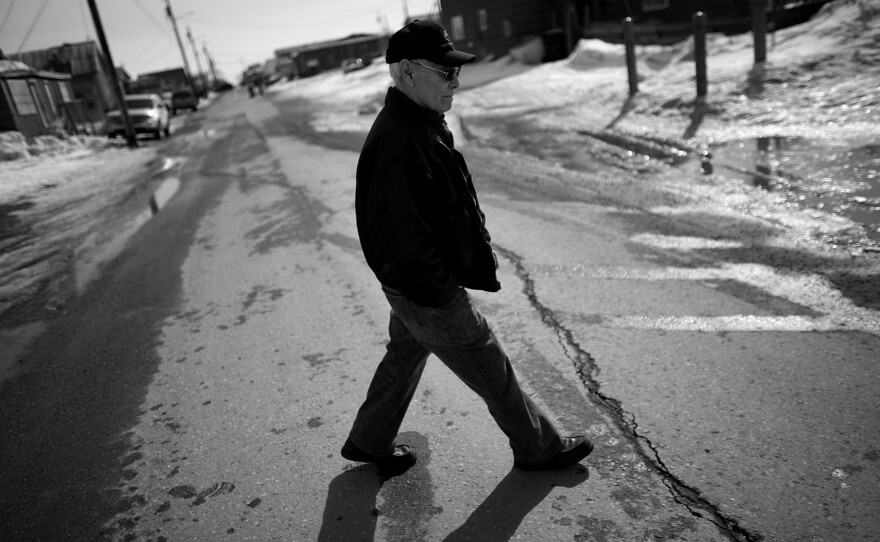
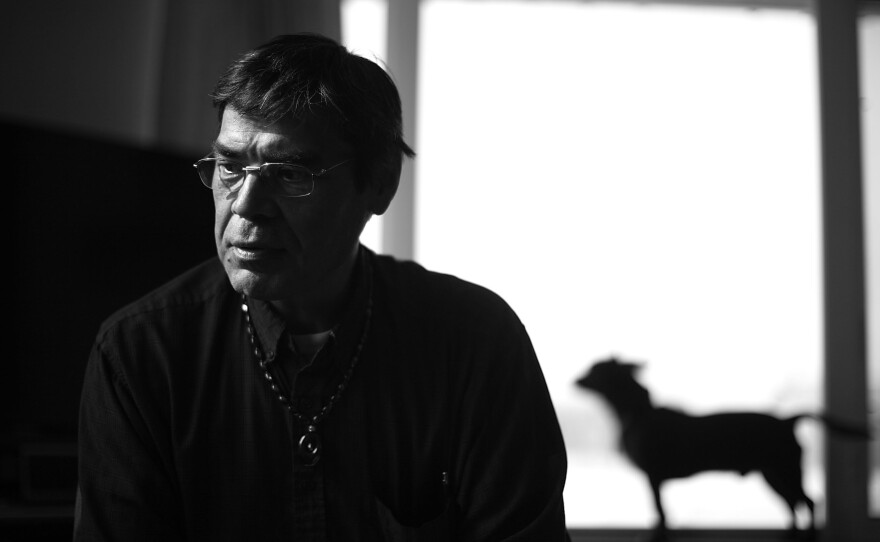
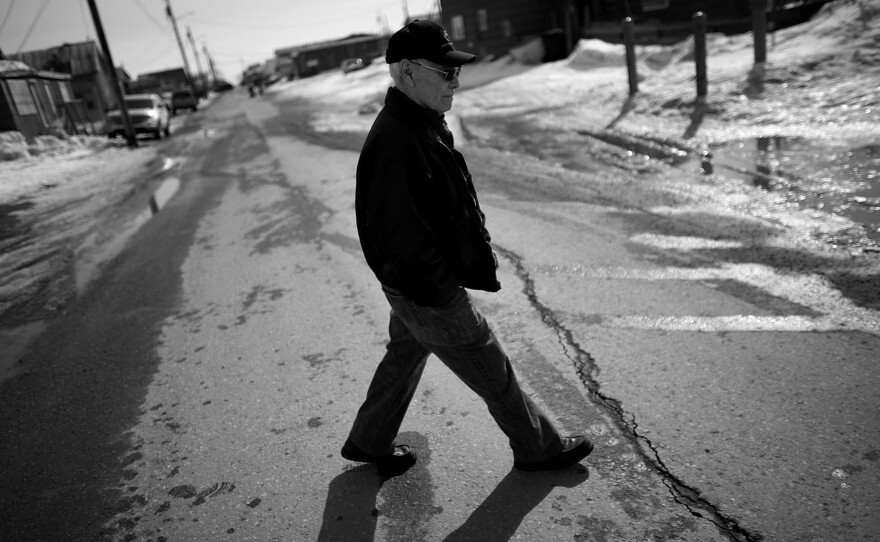
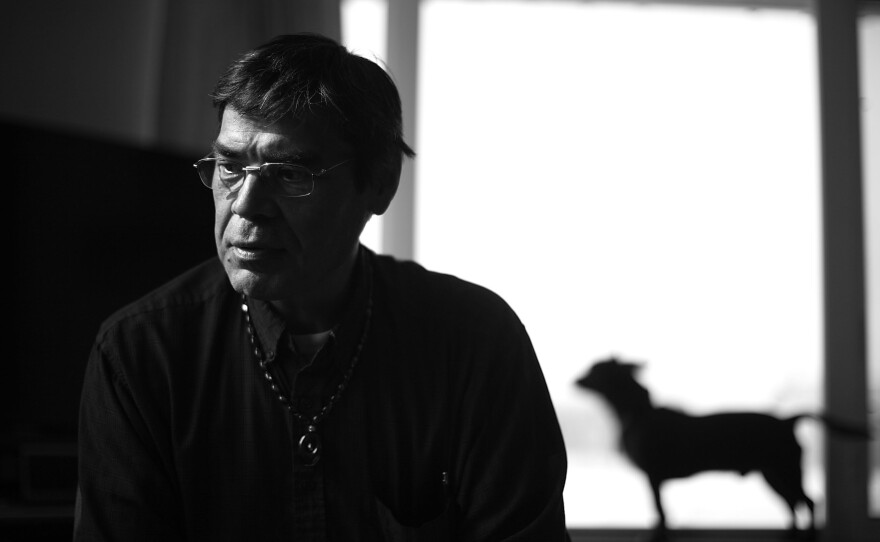
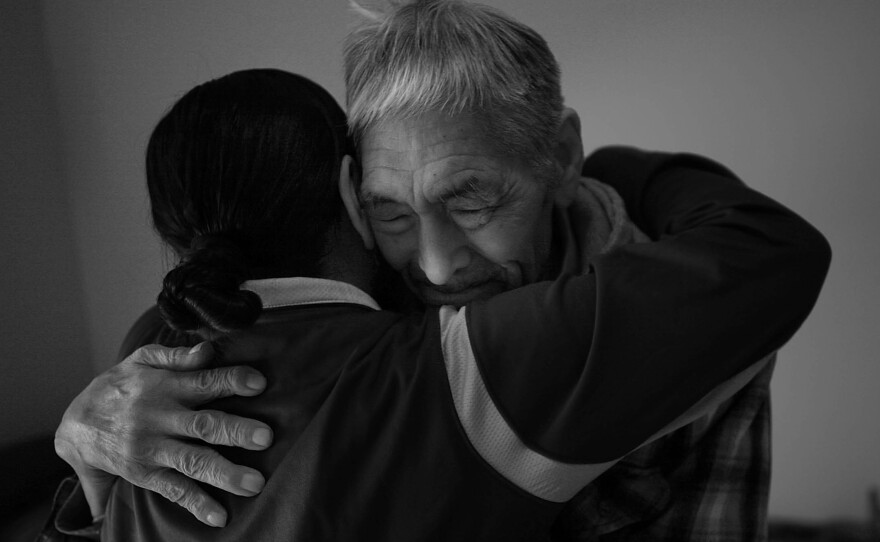
Alaskan Clyde Iyatunguk grew up hearing stories about the U.S. Army colonel, Marvin 'Muktuk' Marston, who helped his father trade his spear for a rifle, to protect his homeland during World War II.
Marston is a household name with Native Alaskans. The nickname comes from an Eskimo eating contest -- muktuk is whale skin and blubber, eaten raw.
After the Japanese reached the Aleutian Islands in 1942, Marston traveled by dogsled across Alaska looking for volunteers who knew how to fight and survive in the Arctic terrain.
"So Dad stood up and said, 'OK, we're Americans, what do we need to do?' " Iyantunguk recalls.
"Dad" is Laban Iyatunguk, now 82. He was only a kid, but he lied about his age and signed up for the Alaska Territorial Guard, or ATG.
"Being Alaskan, and here our enemies were down in Aleutians," says the elder Iyantunguk. "There was war. That was the war, you know?"
More than 6,300 Alaskan Natives volunteered for the ATG, or Eskimo Scouts. They never had to fight off a full-fledged invasion, but the ATG -- who served without pay -- did rescue a downed pilot and secured key airfields. The unit dissolved at the end of the war.
"ATG was almost [a] forgotten branch that took part in World War II," says Laban Iyatunguk.
Forgotten By The Government
The U.S. government certainly seemed to forget about them: It took until 2000 to get the ATG recognized as veterans, then several years more for the bureaucracy to start registering them for benefits. That registration packet came to Laban Iyantunguk in the mail
"They sent me a bunch of papers, big brown envelope about an inch thick," he says. "I just shoved the papers down under the TV, and they're still there."
Earlier this month, at the Veterans of Foreign Wars hall in Nome, Alaska, Laban and his son Clyde, along with other local veterans, met with a group visiting from the Department of Veterans Affairs in Washington, D.C. Clyde was keen to get his father signed up, but Laban Iyantunguk still found the red tape daunting and walked out.
"Oh, let 'em talk," he said as he crunched through the snow out to his pickup truck. "What good is paperwork gonna do? I been waiting and waiting and nothing's happened. What they doing? Waiting till we're 6 feet underground?"
Clyde promised to get his father registered; the potential benefits include a pension and a home loan, which he can pass to his wife.
Most ATG vets never got even that: Two of Clyde's uncles died before they could be registered for benefits. Of the more than 6,300, only dozens are still living, several of them in Nome. For a time, the Alaska State Office of Veterans Affairs concluded it had located all of the veterans, but every so often another family gets in touch with the office.
That was the case recently with Frankie Kuzuguk, who lives in a nursing home at the regional hospital in Nome. The 82-year-old sometimes has trouble remembering things, like when he joined the guard.
"I was stationed mostly in Anchorage. I can't remember the date -- getting old!" he says.
Kuzuguk was speaking with a VA group from Washington, D.C., and Anchorage -- they had come to give Kuzuguk his honorable discharge papers. The discharge is more than 60 years late, but it's necessary to classify Kuzuguk as a veteran. He also got a silver medal -- a distinguished service coin -- from the state. But it may have been the acknowledgment that matters most to him now.
"Mr. Kuzuguk has some periods of confusion, and what I can say is the one thing he always talks about ... is his time in the Army," says Christine Shultz, who directs social services at the hospital. "Having the military come and recognize him is the most important thing that could have happened."
Tommy Sowers, a senior VA official, handed Kuzuguk his discharge, and thanked him for his service.
"I'm very glad you guys are here today," Kuzuguk responded.
Even for those never recognized for their service in life one last benefit remains: a U.S. military headstone to mark their grave. At this point, it's the most common benefit delivered to the members of the Alaskan Territorial Guard.
Copyright 2013 NPR. To see more, visit www.npr.org.






